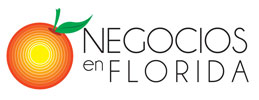There are many entrepreneurs who, imbued with daily routine, have never stopped to think about what the value of their business could be. It often happens that after years of hard work, what was initially an initiative started with scant means, may have become an appreciable reservoir of value.
Even if you do not think about selling your company, it will always be stimulating to know how much it is worth for the purposes of a credit application or, simply, to know the amount of assets that your heirs will inherit.
When the entrepreneur understands the factors that determine the value of his business, he will be able to assume strategies to increase profitability and adequately position his company in the market. In this sense, it is important to know the different valuation methods used by experts to know which is the one that best suits each company in particular. The most widely accepted in the business world are the following:
[Hr]
1.) Book value method: It consists of subtracting the value of the assets from the value of the liabilities and establishing an identity between the value of the company and the value of the equity. In other words, the surplus -accumulated and current- and the reserve accounts from the balance sheet are added to the capital stock. If this value is adjusted in consideration of intangible factors such as prestige (good will) and intellectual property rights (trademarks, patents, copyright) the figures will improve but will not reflect at any time the dynamic aspects of an ongoing company .
This valuation is simple because it emanates from the financial statements themselves, but it is usually very low in relation to the fair market price of a company. The book value method, therefore, establishes the minimum value at which a company should be valued.
[Hr]
2.) Liquidation Value: It is based on the premise that a company can be sold in parts in the market. That is, what would be the value that would be obtained if the real estate, machinery and equipment, inventory, intellectual property rights, shares and other paper investments, accounts receivable were sold separately and cash was available in cash and banks. A similar approach is the one that establishes a value based on the supposed replacement price of each and every one of the assets that make up the company.
[Hr]
3.) Excess Earnings: It is also based on the value of tangible assets and, through the application of the opportunity cost criterion, compares the performance of that value if it were placed in the best financial alternative with the net income flow of the company. The difference between both magnitudes will yield a surplus that, when added to the book value, will represent the total value of the firm.
[Hr]
4.) Multiples Method: It takes into consideration the indices generated by the market based on sales operations of companies that have been carried out in various areas of economic activity. The averages -multiples or rules of thumb- that result when applied to the value of sales or profits will show the value of the company. These indices appear periodically in various specialized publications such as the Business Reference Guide written and edited by Tom West (www.businessbrokeragepress.com). The mean multiple values indicate that half of the income is below the mean and the other half is above. Therefore, the middle value is just an intermediate point that does not represent the income multiple for any current transaction. Unless the evaluated signature is truly an average signature, then using the rule of thumb for this purpose is incorrect.
[Hr]
5.) Comparative Value Analysis: Although the record of business sales is difficult to obtain, it is possible to do it through operations carried out through brokers affiliated with associations such as Business Brokers of Florida that keep this type of statistics. Knowing the value of transactions of similar companies and making the pertinent adjustments, an approximate value of the company under analysis is obtained.
[Hr]
6.) Discounted Cash Flow: It is based on the excess earnings method but without taking into consideration the book value or the ideal return on investment. Instead, the value of the company is established based on its ability to generate long-term net cash flow. Through a detailed analysis of past costs, expenses and taxes and their future projection, the cash flow can be discounted to determine the present value of the company.
[Hr]
7.) Eclectic Method: It takes elements of the previous methods and combines them to produce a value that depends on 3 factors: 1) current net cash generation; 2) cash flow growth in the foreseeable future; and 3) return that buyers require on the investment they make in your business.
This method is especially useful for valuing small and medium-scale companies in which the figure of the owner and that of the manager are often confused. Consequently, in order to have an approximate idea of the net cash flow that a supposed buyer would have, if he bought, the values corresponding to depreciation and amortization of assets, salaries and personal expenses of the owners and the expenses caused that they are not recurring. By projecting this flow, accumulating it in annuities and dividing it by the amount invested, the investment recovery multiple will be obtained.
To conclude, the use of all the methods described is always aimed at obtaining the magic figure that best approximates the fair market value of the business, that is, the price at which a motivated seller is willing to sell and the amount that the buyer motivated would be willing to pay, as long as neither is subject to undue pressure. In any case, seeking advice from an expert appraiser who chooses the method that best suits your particular circumstance is the best way to clear up the unknown in relation to the value of your business.




